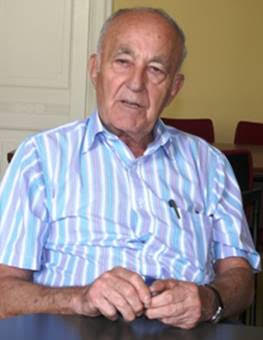
THE VOICE OF INTERNATIONAL LITHUANIA
|
VilNews has its own Google archive! Type a word in the above search box to find any article.
You can also follow us on Facebook. We have two different pages. Click to open and join.
|
Archive for June, 2011
UK visitor numbers to Lithuania up 21%
- Posted by - (0) Comment
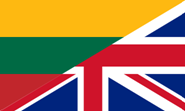
Lithuania, host of the first joint AITO tour operators and agents annual conference, is hoping budget airlines will offer more direct flights from the UK this winter following a rapid increase in the number of visitors to the Baltic state.
Visitor numbers from the UK, Lithuania's sixth largest market, were up 21% in the first quarter of this year and overall visitor numbers were up 39% on the same period of last year.
In April, low-cost carrier Wizz Air launched a five-times-a-week service from Luton and two flights a week from Doncaster to the capital city Vilnius.
In May, Ryanair launched a daily service from Stansted to Vilnius, which it operates alongside its flights from seven UK airports to Lithuania's second city, Kaunas.
"We are hoping that Wizz Air will increase its Luton service to daily from this autumn and that there will be more Ryanair flights," said Augusta Jaudegyte of the Lithuania National Tourism Office.
In total, Lithuania attracted 1.5m tourists last year, a 10% rise on the previous year when visitor numbers plunged due to the worldwide economic crisis.
"Some hotels were almost empty in 2009," said. Jaudegyte. "A lot of new hotels opened before the crisis, but 30% to 50% of the rooms were empty so we have a lot of room for growth."
Prior to the launch of direct flights, the former Soviet state was struggling to appeal to UK travellers, possibly due to a lack of awareness of its rich heritage, its countryside and its beaches.
Read more at:
http://www.travelmole.com/stories/1148135.php
- Bookmark :
- Digg
- del.icio.us
- Stumbleupon
- Redit it
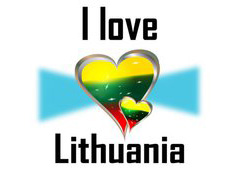
Illustration: http://www.facebook.com/pages/I-love-Lithuania/124391247572076
Dear Aage
Your editorial of 6 June:
("How can Lithuania better attract and assist foreign investors?")
made depressing reading.
It also made me think of an analogy which helps me to understand why I and other don't give up and turn our backs on Lithuania. The analogy partly comes to mind because at the beginning of August I am visiting Lithuania with my son (age 35) who has never been to Lithuania yet. Anyway, the analogy is this: let's say you and your partner are parents who love their child very much, as is natural. Let's say that at a certain age, perhaps 10, for argument's sake, your child is kidnapped by a creep and undergoes all sorts of horrible experiences at which I won't even hint – a parent's nightmare. The creep keeps your child for 25 years. During that time you never know whether you will ever see your beloved child again and the worry is hard to live with. OK, finally after 25 years the creep who was jailing your son/daughter finally dies and your child is able to escape. Bewildered, he/she manages to get back to your house and say "Here I am, I'm still alive."
Now anyone can imagine what a horrible situation this is for the parents. Of course they never stopped loving their child and they are glad to have him/her back. But after 25 years, their child is automatically not the person they used to know and love, plus there are all the horrible experiences on top of that, and the damage done by 25 years of living with a creep.
I don't know how other feel about my analogy, but I personally find it useful to help understand our feelings. Our beloved country was kidnapped/hijacked by a bunch of creeps and held hostage for 50 years. They did horrible things to her. And the most horrible aspect of all is that the Soviet mentality lives on in so many Lithuanians and it is stopping Lithuania from becoming a normal country. Perhaps the sentence that upset me most in your editorial was: « "What's in it for me personally?" was the question that was often presented when we contacted representatives of local authorities and businesses.» It upsets me because it summarises the Soviet mentality that is continuing to do so much harm to my native land; and it upsets me because that mentality is still so widespread. It's why schools and hospitals continue to languish in their primitive state – because crooked politicians and businessmen can't make a "killing" out of them the way they do out of real estate development projects. Having a few skyscrapers and fancy shopping centres is no big deal. That's not a measure of civilisation. It's when the schools and hospitals come up to Western European standard – that's when we will be able to feel some progress has finally been made.
What keeps me from despairing is that unlike individual humans, fortunately countries are not mortal, they do not automatically die in less than a century. So Lithuania will go on, and my hope is that the forces of light (i.e. the West) will in the long term win over the forces of darkness (i.e. the East). Hopefully this process will be helped by Lithuanian immigrants (or their offspring) returning from Western countries, returning with Western attitudes, not prepared to tolerate the lingering Soviet way of doing things. Returning to my analogy, I guess the basic thing I want to say today is let's remember that our loved one is a torture and trauma survivor, and healing will be a long, slow process. It will require a lot of patience and understanding from us, and well thought-out forms of practical assistance.
Regards
Gintautas Kaminskas
Australia
- Bookmark :
- Digg
- del.icio.us
- Stumbleupon
- Redit it
Back to the USSR!
- Posted by - (6) Comment
|
BACK TO THE USSR! Text: Vin Karnila
ZAZ-965A Zaporozhets, produced 1962-1969
When people talk about how life was and how society was during the Soviet times, it is not a happy conversation filled with laughter. Yes, there is the laughter and warm conversations about family events during this time. There is also much laughter when talking about some of the absurdities of the Soviet system of government but in general, there is very little to generate smiles and good humor when you talk about how the Soviets imposed their will on the people. With one exception – their automobiles...
|
SO, HOWS YOUR ZHIGULI?
Text: Vin Karnila
This could have been a common question between friends, family and colleagues during the time of Soviet Russia’s occupation of Lithuania and the Baltics. When people talk about how life was and how society was during this time, it is not a happy conversation filled with laughter. Yes, there is the laughter and warm conversations about family events during this time. There is also much laughter when talking about some of the absurdities of the Soviet system of government but in general, there is very little to generate smiles and good humor when you talk about how the Soviets imposed their will on the people. With one exception – their automobiles.
As most of you know, buying an automobile during Soviet times was not a matter of months of visiting one dealership and another, looking at automotive magazines getting advice on what model to buy, asking friends and family what they think is the best model for you. You went to a government office and submitted a written request to buy a car. After a year or so you found out if your request was approved. If it was approved you were TOLD what car the government was ALLOWING you to buy (in some cases you were very lucky and were given two options) and then you submitted your order and waited another two or three years (possibly longer) to actually take delivery.
In spite of all this, when ever the conversation turns to cars, when ever you ask about the car a person had during these times or when ever you mention a car of the Soviet era the reaction is always the same. The response is always smiles, laughter and entertaining stories about their car and their automotive adventures. Because of this I thought it would be entertaining and interesting to look at some of these vehicles of Soviet times just to give you a bit of an idea as to what causes all this good natured reminiscing.
ZAPOROZHETS / ZAZ
The Zaporožietis or Zaporožkė, as the Lithuanians said it (Zaporozhets in Russian) was a series of subcompact cars designed and built from 1958 at the ZAZ factory in Soviet Ukraine ("Zaporizky Avtomobilny Zavod", or Zaporizhian Automobile Factory). Different types of Zaporozhets were produced until 1994.
In Russian, the name Zaporozhets means a Cossack of the Zaporizhian Sich. It can also mean а man from the Zaporizia Oblast.
Zaporozhets are still warmly remembered in the Baltics and many of the other ex Soviet Russian occupied countries. In fact I must say that if you just mention Zaporožietis, immediately you see big smiles and most often the smiles turn to laughter. The Soviet Zaporozhets was destined to become a "people's car", as it was the cheapest of Soviet cars and so it was affordable to the common workers. In fact the term “peoples car” is not quite accurate in today’s opinion. Most people today consider it the “worker’s car” in that this was the car that lower paid “workers” were allowed to buy. If your status and income was higher than the “common worker” you were allowed to buy a car a bit more desirable. In spite of its small stature it proved to be rather sturdy and well suited for the poor Soviet roads. All Zaporozhets were rear engine and rear wheel drive with an air cooled engine. The looks of this car resulted in several nicknames. One was "Zapor". This was just short for "Zaporozhets" but the problem was that the word “zapor” in Russian also means "constipation". Some called it the “Kuprius” (hunchback) due to the ZAZ-965’s rear shape. ZAZ factory workers supposedly never used these derogatory nicknames, using "Malysh" (in Russian this roughly translates to child) instead. Another translates to "big-eared" since the car had air intake scoops on its sides to cool down the engine in the rear of the vehicle.
ZAZ-965 Zaporozhets model was made between 1960 and 1963. Despite the fact that the design is almost identical to the Fiat 600 and Puch 500, ZAZ representatives say that the car was exclusively Soviet designed and created by Soviet ZAZ engineers jointly with colleagues from Moscow's NAMI and Moskvitch car plant. The first prototypes were actually designated as Moskvitch-444.
It was powered by a rear-mounted, air cooled OHV 887 cc V4 engine of partially aluminum design. Urban legend had it that the Zaporozhets engine was a starter motor in Soviet tanks. This is completely false. Any one that has knowledge of the Soviet tanks of that era will tell you this.
ZAZ-965A Zaporozhets
The “A” model was manufactured between 1962 and 1969. The most notable visible difference was that the ZAZ-965A had the air-intake "ears" removed. It also had a new engine which created more room in the engine compartment. Since Soviet car owners were expected to do much of the servicing themselves, this layout was more practical especially if you needed to work on the car in harsh winter conditions.
ZAZ-965A Zaporozhets
While there are not a lot of ZAZ-965s still driving on the roads of the Baltics, it is surprising how many you still see. As you see one driving down the road it’s interesting to see the reactions of the other drivers. Every one looks, they point, they smile and if there are others in the car you can see that they immediately start talking to each other. When you see one parked on the street you will almost always see a group of people around it, all with big smiles on their faces. They are talking and laughing about the ZAZ that they had or some one they knew had and reminiscing about all the adventures and long trips they took in it. Let’s face it, the 965 is cute as a button and it’s just not possible to not love the little thing.
ZAZ-966 Zaporozhets model was made from 1967 to 1974. It had a restyled body and no longer resembled the Fiat 600 BUT NOW very closely resembling the German NSU Prinz 4 which had been on the roads since 1961. Once again the Soviets said, NO NO NO it’s our design (why do they always do that). In addition to the “new style” body, the engines were slightly updated but the infamous "ears" were back.
ZAZ-968 Zaporozhets was produced from 1972 to 1980. While the outside was about the same as the 966 model. it featured the newer MeMZ-968 engine, which increased the displacement to 1.2L and the power output.
Vladimir Putin with his 1972 ZAZ-968 Zaporozhets
ZAZ-968M Zaporozhets once again had the ears removed and was made from 1979 to 1994. Special versions of this model Zaporozhets were equipped with additional sets of controls that allowed operating the car for driver’s without the use of one leg or with hand controls if they were without the use of both legs. These were given for free to the disabled people that the Soviets felt warranted the use of an automobile.
ZAZ-968M
You still see quite a few ZAZ-968s on the road here. They have proven themselves to be very durable cars over the years and are easy for the owners to repair and maintain themselves and with the higher quality of replacement parts available today they are also quite reliable. While one that has been preserved or restored and is in excellent condition may get a few closer looks they just don’t get the attention the original ZAZ-965s do.
ZHIGULI
Due to exporting and a number of manufacturing plants around the world producing these cars, this is the most internationally recognized car of the Soviet Union. What most of the world knows as the LADA was named the ZHIGULI in the Soviet Union. Actually the name of the first model was VAZ-2101 manufactured by VAZ (Volzhsky Avtomobilny Zavod – Volga Automobile Plant). This time there was no guessing as to the true origin of the design. The VAZ-2101 came about through collaboration with the Soviet Union, Italy and Fiat. The manufacturing plant’s construction was begun in 1966 on the banks of the Volga River in the Samara Oblast of Russia and the first cars left the production line in 1970. The first model produced was the VAZ-2101 sedan. In 1972 the first station wagon was produced the Vaz-2102. A new town, Tolyatti, named after the Italian Communist Party leader Palmiro Togliatti, was built around the factory to accommodate all the workers.

VAZ-2101 Sedan
The origin of the VAZ-2101 comes from the Fiat 124 sedan so all were front engine, rear wheel drive with a straight rear axle. Many modifications were required though so that the car could survive being driven on the terrible roads in the Soviet Union and in extremely harsh winter weather. Some of these modifications were the suspension being strengthened and raised to clear rough Soviet roads and the body shell was made from thicker, heavier steel. The first models were equipped with a starting handle in case the battery went flat in Siberian winter conditions, though this was later dropped. Another feature specifically intended to help out in cold conditions was a manual auxiliary fuel pump. As with most automobile models, there were revisions over the years which resulted in the model numbers being changed to 2103,2105, 2106 and 2107. These revisions were mainly changes to the engine size and some cosmetic changes however they all kept the “boxy” shape and style of the Fiat 124. In the late 80s the ZHIGULI name went away, the company was restructured and became known as LADA. At this point the “boxy” Fiat 124 style went away and the company started producing more modern styled vehicles.

VAZ-2102 Wagon
The VAZ-2101 was also destined to become a “people’s car”. While more expensive than the ZAZ models it was still priced so that the “middle class” (if there ever was such a thing in the Soviet Union) could afford one.
Henry Ford said of his Model – T Ford vehicle:
"I will build a car for the great multitude. It will be large enough for the family, but small enough for the individual to run and care for. It will be constructed of the best materials, by the best men to be hired, after the simplest designs that modern engineering can devise. But it will be so low in price that no man making a good salary will be unable to own one—and enjoy with his family the blessing of hours of pleasure in God's great open spaces."
This was the intent of the Soviets with the ZHIGULI. It was said that based on the average wage of a worker, it would take about eight years for a person to save up the money to buy a one. The ZHIGULI quickly became a hit with the people and became the car of the Soviet Union. While the ZAZ was surprisingly roomy for a car its size the ZHIGULI was roomier and more comfortable. Keep in mind though that the ZHIGULI was a very basic vehicle and far from anything even remotely close to being luxurious. It also proved to be quite sturdy and reliable and owners could easily perform maintenance and do repairs. Not only was the ZHIGULI the most popular car in the private sector it was also the car most used as taxis and by city, regional and federal governments. They even had special Police models.

ZHIGULI - Police
Now let’s try to clear up the confusion about the name. As I stated before, the actual name of the car is VAZ. The various models are VAZ-2101, VAZ-2102, etc. If a VAZ-2101 was destined for the Soviet Union it would be called a ZHIGULI or more specific ZHIGULI-2101. If the car was destined for outside the Soviet Union it would be called a LADA or more specifically LADA-1200. LADAs were exported not only to the Soviet Block countries but to countries all over the world. In fact there were so many LADAs built in Russia and in other countries that it remains the MOST PRODUCED CAR IN THE WORLD. Yes you got that right – more than any Ford, GM, Toyota, etc. model.
Now here’s the next question. How do you tell a ZHIGULI from a LADA?
1. If the steering wheel is on the right side it was made for export – It’s a LADA
2. If it has a diesel engine it was made for export – It’s a LADA (there were no diesel ZHIGULIs and no LADAs in the Soviet Union were diesel powered)
So if the steering wheel is on the left and it has a gasoline powered engine the only way to tell is to look at the rear of the car.
Example – Hear is a VAZ-2102 wagon I photographed in Vilnius last week.
Is it a ZHIGULI or a LADA?

VAZ2102
If you look at the logo on the front this won’t tell you anything because this is the logo for the VAZ company and will be found on both cars.
 VAZ2102-Front
VAZ2102-Front LADA logo
LADA logo
When you look at the back you can see that ZHIGULI is written in Russian. If it was a LADA, the word LADA would be written in the Latin alphabet. From this you can also tell that this wagon is the
VAZ-21021/ZHIGULI-21021 model because it shows that it has a 1300 cc engine. Based on this you would also know that it was manufactured sometime between 1978 - 1986. If it had a 1200 cc engine it would be a VAZ-2102/ZHIGULI-2102 manufactured sometime between 1972 – 1983.
Other than the name on the car, there were no other differences between a ZHIGULI and a LADA.

VAZ2102-Back
Now a moment ago I said that there were no LADAs in the Soviet Union that were diesel powered. I also said that the cars with the LADA name plate on them were for export. So what’s with the LADAs in the Soviet Union???
Actually, there where many LADAs on the roads of the Soviet Union. What happened was this. At the factory they would put the LADA name plate on a car as it was destined for export. Then they decided that the vehicle was more needed in the home market so they would send it to some where in the Soviet Union instead of exporting it. Another situation was a car with the LADA name tag would be exported. It would be sitting in a Soviet block country waiting delivery to some one then it was decided that it was needed in the home market and it would be sent back to the Soviet Union. This is how so many LADAs ended up being on Soviet Union roads.
My cousin Vytautas in Vilnius had one of these. He got it around 1980 (as he recalls he paid 6,000 Rubles for it) and drove it until about 1995. Even though the name on the car said LADA, never while he drove it and never after he got rid of it did he ever and has never referred to it as a LADA – ALWAYS it is ZHIGULI!!! I can’t speak for our good friends in Estonia and Latvia but I can tell you that in Lithuania the VAZ-2100 series was and still is ALWAYS called ZHIGULI never LADA.
Where did these names Zhiguli and Lada come from?
ZHIGULI came from the Zhiguli Mountains which are located in the area of the confluence of the Volga and Samara Rivers in Russia. LADA is a little more difficult to pinpoint. It is widely believed that the LADA was named after some ones daughter, wife or grandmother in the shortened version of the female Slavic name of Ladislava. Another theory is that it is the shortened version Ladislava who in Slavic mythology is the goddess of beauty, love and marriage. Dear readers, if you can shed any light on this question of the LADA name please tell us.
As I have mentioned a number of times the ZHIGULI was quite a reliable car. This statement may draw some reactions from some of our readers in countries where the LADA was exported to or produced. In many of these countries the LADA’s reputation was just the opposite. One of the countries LADA was exported to was Canada and I’m sure many of our Canadian friends could describe the car in most uncomplimentary terms. In fact I can recall some of the LADA jokes I would hear while visiting clients, friends and family in Canada.
Q: How do you double the resale value of a Lada?
A: Fill 'er up!
Q: Why do Ladas come as standard equipment with rear window defrosters?
A: So your hands stay warm while you're pushing it.
Jokes aside, here was the situation. The internally lubricated parts of the motor were of amazingly (or even surprisingly) high quality. It was very common that an owner would put over 400,000 kilometers on the engine before a major overhaul was needed. One of my students told me that his father had over 600,000 kilometers on his ZHUGILI before he needed a new motor. The problem was all the other components like fuel and water pumps, ignition system, generator, etc. These parts suffered from quality issues. To compound the matter, in many countries there were also issues with parts availability. So a LADA owner would have a problem with the car. They would take the car to the LADA dealership to find out that they would need to wait a number of days or even weeks for the part to fix it. Now a minor inconvenience turns into a major problem. The other problem was that often the replacement part would have the same quality issues as the original part and sometime in the future the owner would suffer a repeat of the same situation. As I understand it, these days the replacement parts for the ZHIGULI are of very good quality. As a result I have been told that a ZHIGULI/LADA still on the road today is actually a better car than when it was new if it has had many of these new higher quality replacement parts installed on the car.
VOLGA / GAZ
Unlike the smiles and laughter you get when you ask somebody about their Zaporožietis or ZHUGILI, when you mention VOLGA you get a serious look and an answer like – Oh, those were only for important people. I guess if you had a Volga you would be all smiles and giggles but the point is that not many people were allowed to drive a Volga.
The Volga was an automobile that the Soviets produced to replace the outdated GAZ-M20 Pobeda in 1956. Extremely modern in design for its time, it became a symbol of higher status in the Soviet elite. In addition to their role as status symbol, many were also used as taxi cabs, road police interceptors, and ambulances (estate/wagon models).
Manufactured by GAZ or Gorkovsky Avtomobilny Zavod (Gorkey Automobile Factory), three models series of the Volga were produced during the time of Soviet Russia’s occupation of the Baltics. The GAZ-21, GAZ-24 and GAZ-24-10.
The GAZ-21 Volga was produced in three series from 1956 to 1970. It was offered in a sedan and estate/wagon (GAZ-22). While designed by Lev Yeremeev it still copied automotive designs of western countries (so what else is new). The Volga was everything that the ZHUGILI was not. It was very well styled and comfortable for it’s time. With a 2.4 Liter engine it had some get-up-and-go.



GAZ-21 1st Series GAZ-21 2nd Series GAZ-21 3rd Series
GAZ-24 Volga
The GAZ-24 Volga was produced in two series. First series 1968 to 1977 and the second series from 1968 to 1985. It was produced in a sedan and an estate/wagon model and was powered by a 2.4 Liter engine. In addition to wanting to offer a more modern style body, the reason for the GAZ-24 was to correct design faults in the GAZ-21. Among the improvements were changes to the leaf spring suspension, new ignition and boot locks. One unique feature that the early series featured was a belt driven speedometer, which proved too complicated and was replaced with a cable drive. In 1977 the car saw the first serious modernization, this introduced "teeth" on the bumpers, retractable seat belts, front fog lights and new dashboard. The interior of the car saw the front bench seat replaced by two individual adjustable seats.



GAZ-24 Volga GAZ-24 Volga – side view GAZ-24 Volga – Police
The GAZ-24-01 Volga was introduced in 1971 was built to serve as a taxi. Changes included an artificial leather interior as well as slightly modified engine as well as the usual taxi equipment.

GAZ-24-01 Taxi
The GAZ-24-02 Volga was the estate/wagon version and it was introduced in 1972. The production of this model lasted right up to 1987. An ambulance version, the GAZ-24-03 was built on the estate's version.


GAZ-24-02 Estate GAZ-24-03 Ambulance
There was actually a third series the GAZ-24-24 Volga which was powered by a 5.53 litre, 195 hp V8 engine. This car was never available for private ownership and was used by the KGB.

GAZ-24-24 – KGB
The GAZ-24-10 Volga was the third model. This model had, in addition to cosmetic and styling changes, quite a lot technical upgrades to the power train, braking system, suspension and carburetor and cooling mechanism. Its production began in 1982 with a sedan model and in 1987 they began producing a wagon model. Even with all these upgrades, the model was way behind in regards to styling and technology compared to western vehicles and production stopped in 1992.

GAZ-24-10
As I stated before, the Volga was not a “peoples” car. It was a car that the Soviets only gave the “elite” permission to own. There are surprisingly still quite a few being driven on the roads of the Baltics and it is very interesting to see the reaction of people when they see a Volga these days. For the most part the reaction is – so what. If one is parked on the street it may, at the most, receive a quick cursory glance. Only if the car has been maintained or restored to pristine condition will it get any real attention and then the attention is more to condition of the car. The reaction is not big smiles and laughter reminiscing about good times they and their family in the family car. It is more like many are thinking – Oh, so this is the car THEY said I could not have.
While I have shared some information on the more common cars that the people of the Baltics were “allowed” to drive during Soviet Times I think I should also point out some of the other vehicles that were on the roads of the Baltics during this period.
MOSKVITCH
The Moskvitch 400 series is another smiles and giggles car produced from 1956 to 1965. Since it was never produced in numbers like the Zaporožietis and ZHIGULI it did not achieve the “people’s car” status but still it was designed to be affordable for the average person. I honestly do not know any one that owned a Moskvitch but I know that whenever you talk about the car or when people see one the response is always light hearted. This is quite understandable. I mean just look at it. It’s a cute little thing and you can’t help but fall in love with it. It’s kind of like the reaction westerners have when you mention Morris Minor.



Moskvich 407 Moskvich Estate 423 Moskvich 408
According to my research, there was never an automobile manufacturing plant in the Baltics during the time of the Soviet occupation. In Latvia and in Lithuania though there were factories producing busses and trucks.
LATVIJA
The Riga Autobus Factory (RAF), (Rīgas Autobusu Fabrika in Latvian) was a factory Latvia, making vans and minibuses under the brand name Latvija. The factory first opened in Riga in 1949 then in 1976 the construction of the new factory in Jelgava was completed. Their vans and minibuses were widely used throughout the USSR as circuit taxis (the Marshrutkas), ambulances and as a special services vehicles. These were not intended for private use. In fact the only time an private individual would get permission to have one of these was if they had more than five children.
Since the vehicle itself was referred to as a “Latvija”, this vehicle brought about a new expression to the Lithuanian language. For example, say you were standing on the sidewalk waiting for a circuit taxi and a friend passing by stopped to talk with you. Your friend could ask “what are you doing” and your response would be “aš laukiu Latvijos” which translates to – I wait Latvija. Or you and spouse are talking about the birthday celebration you will be attending tomorrow and the question comes up of how will we get there. The answer would be “mes važiuosime su Latvija” which roughly translates to - we will take the Latvija.


Latvija-977 Latvija-2203
UAZ Bus
I just needed to throw this in. Made by UAZ, Ulyanovsk Automobile Factory (Ulyanovsky Avtomobilny Zavod in Russian), you still see a surprising number of these. Where you most often see them is at the open air fruit and vegetable markets that are so common here. Obviously from looking at the photo you can see that these were made for military and service use but since they are practically indestructible people have found that they are great for hauling produce from the villages to the city.

UAZ Bus
These next two vehicles must be mentioned when talking about cars of the Soviet era. Not because they were popular because they were not. They were not for sale. They were only allotted to the absolute upper echelon of the Soviet government. These two cars were the symbol of absolute Soviet power. They were also the symbol of the contradiction of the Soviet’s form of communism. In a form of government that was supposedly for the people and for the workers, the common people were only allowed to drive Zaporozhets and ZHIGULIs while the leaders of this government of the people rode around in ultimate luxury.
CHAIKA
The Chaika, which means gull, is a luxury automobile from the Soviet Union made by GAZ.
Chaikas were one step down from the more prestigious ZIL limousines, and were issued to top professionals, party officials, scientists, academics, and other VIPs. For their larger size and more powerful V8 engines, Chaikas were also ordered in some quantity by the KGB. Nikita Khrushchev, although entitled to a ZIL, was known to prefer Chaikas, and kept one at his summer dacha. If you notice the front grills of the cars they display a very distinct emblem which represents the wings of a gull.



GAZ – Chaika convertible GAZ-Chaika limo GAZ-Chaika
ZIL
ZIL (Zavod Imeni Lihacheva - Lihachev Industrial Plant ) built the cars that where the ultimate symbols of Soviet power, used to transport high level politburo members. The ZiL limousine was the favored mode of transport for a succession of leaders. Stalin, Khrushchev, Brezhnev and Gorbachev all had one. After communism collapsed, however, Boris Yeltsin got himself a Mercedes. It is reported though that President Medvedev now wants to replace his Mercedes with a Russian produced limo.

Joseph Stalin’s ZIL limo
The version probably most recognizable is the ZIL-115 which is an armor-platted limousine, produced in the early 1970s. It was used by the top members of the Politburo, Soviet dignitaries on foreign visits and army officers, but it was also used for weddings, which was the only opportunity for civilians to use them. It was very well armored to protect the occupants from small arms fire and the floor was also bomb and booby-trap proof . The interior of the car was quite well made and very well suited to heads of state.


ZIL-115 limo ZIL limo convertible
So dear readers, these are the vehicles that generate the light hearted responses from so many people here in the Baltics. Maybe there are some other models that you could add to this list? Perhaps you have some stories or “adventures” you could share with us about these automobiles? The information I have shared with you, I must admit, just scratches the surface of what the personal transportation situation was like during these times so we would very much like to hear from you to give all our readers around the world more insight to the cars of the Soviet time.
Su pagarbe
Vin Karnila
Associate Editor
- Bookmark :
- Digg
- del.icio.us
- Stumbleupon
- Redit it

From 1952 till 1991 a statue of Lenin occupied one of the most prominent places in Vilnius centre. Today you can still see this and many other sculptures and artifacts from Lithuania's years under the Soviet Union in Grutas Park near Druskinkai in southern Lithuania.
Lonely planet, one of the world’s most popular travel guide publishers, announced recently the list of the most bizarre museums in the world, and Grutas Park near Druskninkai in southern Lithuania was listed as the 4th most bizarre!
The park is dedicated to remind the visitors about the Soviet occupation period in Lithuania.
The park, sometimes called The World of Stalin, won the publishers admiration by black humour and irony from this otherwise sad period.
Gruto Parkas, established in 2001, was appreciated over The Museum of Bad Art in the US, the Hair Museum in Turkey, the International Towing and Recovery Museum in the US, the British Lawnmower Museum, the Sulabh Museum of Toilets and the Museum of Crutches in Azerbaijan.
However, Gruto Parkas was overridden by the Paris Sewer Museum, The Meguro Parasite Museum in Japan and the Icelandic Phallological Museum.
Also, last spring Lonely Planet declared the Curonian Spit of Lithuania’s seaside as the single calmest and most hammock-friendly European beach. In this global beach rating, the Curonian Spit won the 2nd place, overridden only by Dahab beach in Egypt. The Curonian Spit is also listed in the top 10 of the best beaches in Europe.
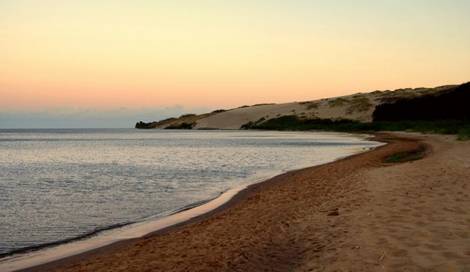
Lonely Planet declares the Curonian Spit (Neringa) of Lithuania’s seaside as the single calmest and most hammock-friendly European beach. The Curonian Spit is also listed in the top 10 of the best beaches in Europe.
- Bookmark :
- Digg
- del.icio.us
- Stumbleupon
- Redit it
My 1978 Lada in New Zealand
- Posted by - (1) Comment

Dear Vin Karnila,
A friend of mine whose brother lives in Lithuania sent me a copy of your article Back to the USSR in Vilnews which I read with interest. Regarding your comments on buying cars during Soviet times reminded me that when my father purchased his car in 1969 (and for many years after), it was not possible to buy a new car in New Zealand unless you had access to overseas funds, which meant that you had to be someone like a dairy farmer who was exporting. At that time, some people would ask their relatives who were farmers to buy cars on their behalf, and then pay them back. In the neighbourhood in which I lived for example, the daughter of only one family had a new car as her husband was a farmer. In fact, they bought a new car (GM Holdens made in Australia) every couple of years. My father ended up buying a 1965 MK III Ford Zodiac imported from the UK by its first owner and I still own it. It is in original condition and has appeared in two UK car magazines. I also have a rare 1972 Volvo 164 (with only 42,000 mls) which I bought several years ago.
My daily car is a 1978 Lada 21031 (1500cc) which I have had since 1987 and used almost every day until recently when I began to bus to work as my carpark is now a construction area. It has 225,000 mls or 360,000 kms on the odometer. I don't doubt what you say about drivers doing up to 600,000 kms on the same engine because I heard of Canadian ones with 500,000 kms and when I had mine checked a few years ago there was no wear in the bore and it still looked new inside. I also agree with you mentioning the Lada as the most produced car. Many people don't realise that because of the figures given for the VW beetle and the Toyota Corolla. However, in the case of the beetle, the boot rubber is the only part shared between models. Every other part including the body pressings and mechanicals are different. The Corolla claim is misleading because it only relates to the name 'Corolla' - in fact there have been at least 6 (possibly 7 now) different Toyota models that have used the brand 'Corolla'. However, in the case of Lada, it is indeed the same car that has been produced with only minor upgrades.
Luckily I have not needed to change many parts on my Lada. In NZ we have access to parts for old Ladas so it is not a problem. The first water pump lasted 90,000 mls and I then fitted another substitute brand that the garage had in stock but it only did 16,000 mls when it suddenly failed. I then changed it for a Lada one again and that one did about 90,000 mls too. I had problems with the fuel pump after 200,000 mls and fitted another. I also had a replacement steering box and carburettor (at 160,000 mls). Recently when the car was on a hoist I checked the differential oil which I had never changed. Remarkably, it looked perfectly clean (just as new oil) and was still at the correct level even though I have never added to it. In the time I had the car, I have only added about 2 cups of oil to the gearbox, although I have heard that 5-speed boxes tend to use oil (mine is a 4-speed).
In NZ, people often make jokes about Ladas but owners generally liked them for their ease of servicing. Every now and then you would get one that would play up but I've never heard of any major problems. One thing that impressed me was the engineering. Shortly after I bought my car, the oil pressure gauge dropped to nothing. I thought the gauge had failed so kept driving the car for a week and at the time was driving to work on a motorway about 34 miles per day. When I did get the car checked, the gauge was in fact working but there was no oil pressure at all! The former owner had been an elderly person who drove only short distances and left the servicing to a local garage. I'm not sure if they had in fact been changing the oil or even used the correct oil because it was thick like sludge and had blocked the oil pickup. I had to get the engine totally cleaned out (which was covered by insurance) but there didn't appear to be much damage apart from some scouring on the cam shaft. The interesting thing is that everyone tells me that it is not possible to drive a car without oil pressure, especially at motorway speeds. All I know is that I did it for a week so either I was very lucky or the car's engineering permitted this to happen.
Several years ago we had a major storm and the carpark in which I was parked got flooded. The water went well up the doors and into the passenger compartment. The other cars had to be towed out as they would not even start, but the Lada started as usual and I drove home after removing the water from the cabin with a tin. I stripped all the carpets and sound proofing as well as all the seats as the water had soaked into the seat packing from beneath. The door cards on the rear doors were damaged but the front ones were not. Over the last years I have become attached to the car and would never sell it even if offered many times more than what I originally paid for it in 1987 ($6000). Nor do I want to get rid of it when it finally dies, and I will hopefully be able to store it somewhere.
Finally, regarding the Volga section of your article. I think the series 1 and 2 photos are in the wrong order (the larger-spaced vertical grill is the earlier model). Also the very first M21 Volga had a different front grill again (with horizontal bars only, and a round star emblem in the middle) so there were in fact 4 series. There is a photo of the horizontal grill version in Julian Nowill's book 'East European Cars' (on page 11).
Well I hope that you find some of what I have said to be of interest.
Best of luck with the magazine,
John Iavas - New Zealand
Hello John,
Thank you for writing. With great interest I read all the information about your Lada. Your experiences with you Lada are like so many millions of other Lada owners in that the power train is pretty much indestructible and the repairs are for all the other components. I can fully understand your attachment to your Lada and your desire to keep it. It was also with great interest that I read about the New Zealand regulation not allowing a person to buy a new car unless it is paid for with funds from overseas. I am guessing that their logic behind this was that New Zealand money would not be used for the purchase of expensive import items.
Warm regards - Vin Karnila
- Bookmark :
- Digg
- del.icio.us
- Stumbleupon
- Redit it
- Posted by - (0) Comment
Lithuania marks 70th anniversary of Stalin-era deportation
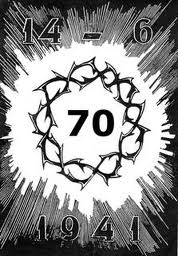
A minute of silence was observed on Vilnius' central Freedom Square Tuesday in tribute to the 70th anniversary of the start of Soviet-era deportations in Lithuania.
On 14 June 1941, mass deportations started in Latvia, Lithuania and Estonia, targeting former members of nationalist parties, police officers, landowners, businessmen, and "criminal elements engaging in anti-Soviet activities and spying for foreign intelligence services."
These people were subject to arrest, property confiscation and imprisonment in labor camps for terms of five to eight years and subsequent relocation to remote parts of the USSR for 20 years.
Addressing a memorial service, President Dalia Grybauskaite described the deportations as a "planned genocide of the people."
A total of 203,590 people were deported from the Baltic republics, including 118,599 from Lithuania between 1940 and 1953.
- Bookmark :
- Digg
- del.icio.us
- Stumbleupon
- Redit it
![]()

By U.S. Rep. Dan Burton (R-IN) in
www.huffingtonspost.com
While the world witnessed the nuclear meltdown at Japan's Fukushima Daiichi power plant in March and remembered the 25th anniversary of the Chernobyl disaster in April, a new nuclear power plant set for construction this fall on former Soviet territory raises alarm at how little has been learned.
What set Chernobyl apart from Fukushima more than anything else was the way the closed Soviet regime responded to the disaster, remaining in denial for weeks that a catastrophe was unfolding. The same could occur in Belarus, which is currently ruled by an autocratic leader who falsified his own reelection last December. Belarus and Russia's mishandling of the proposal to build a reactor near Astraviec, a town in western Belarus, is a warning sign the West should not ignore. Again, we see the potential lack of transparency, international coordination, and communication.
Yet the United States did not object when, only weeks ago, Russia's state-owned nuclear power company, Rosatom, signed a deal with Belarusian President Aleksander Lukashenko. It is still unclear to the governments of neighboring countries what criteria Belarus used in selecting the location of the plant -- a mere 14 miles from Lithuania's border and barely 30 miles from Vilnius, its capital and economic and population hub. Prime Minister Andrius Kubilius and other Lithuanian officials have highlighted the failure of the Belarusian authorities to make a credible attempt to answer safety concerns in required environmental impact statements. "We didn't get proper answers or a proper discussion," noted Kubilius.
Belarus' unwillingness to have meaningful consultations with its neighbors is alarming. These countries, once under the Soviet yoke, now belong to the World Trade Organization, the North Atlantic Treaty Organization and the European Union. And they are now close American allies. The Obama Administration has stated that they agree with Congress that it is in our and Europe's best long-term interest to increase energy security and diversification. However, the optimal way to add to the region's energy independence is to create new, clean energy sources, not to continue to rely upon the shaky assurances of throwback regimes.
Transparency delivers best solutions. I have long been in favor of safe nuclear power as one component of a diversified strategy that will secure greater energy independence while reducing the fuel costs to American families. Brussels is well advised to pursue a similar goal so that its citizens will one day no longer be dependent on the energy goodwill of the Kremlin, which has proven an unreliable supplier time and time again. Between Astraviec and a reactor already under construction to Lithuania's immediate west in Kaliningrad, Russia again demonstrates its intention to solidify its regional energy monopoly, this time that, if unchecked, will ultimately drive Eastern Europe to again become politically subservient to Moscow-- a grave fate that the West must not allow.
This opaque agreement should have sent off alarms at the State Department. Instead, Foggy Bottom has given Lukashenko, whose beleaguered nation is on the brink of financial ruin, a green light to build his reactor, never mind the acute environmental worries or how this may further entrench Europe's energy dependence on undemocratic suppliers.
Both Secretary Clinton and I will visit Lithuania later this month. It is my hope that she will reconsider this disconcerting approach before arriving in Vilnius, as our Baltic allies deserve better. We should strongly echo Eastern Europe's concern and join the opposition led by Kubilius. We too should protest the international legal framework violations that Belarus and Russia are committing with their plans to build the nuclear power plant in Astraviec, with little to no regard to their next-door neighbor's concerns.
Last December, the U.S. Envoy for Eurasian Energy, Richard Morningstar, called for implementing this project "on a competitive, commercial basis and in full compliance with European and IAEA standards." So far, the planned nuclear power plant in Belarus does not fit the bill. Until its proponents comply with all provisions of the United Nations Convention on Environmental Impact Assessment in a Transboundary Context, the Convention on Nuclear Safety of the International Atomic Energy Agency and other international legal acts, the United States and the international community should strongly oppose this endeavor.
In the memory of all those who suffered in the Chernobyl accident 25 years ago, Russia and Belarus must be made to understand: the world is watching.
U.S. Rep. Dan Burton (R-IN) is a senior member of the House Foreign Affairs Committee and is the Chairman of the Subcommittee on Europe and Eurasia.
- Bookmark :
- Digg
- del.icio.us
- Stumbleupon
- Redit it
Russian Rouble – invented in Lithuania?
- Posted by - (2) Comment
|
What would you think if you found out that experts believe that the Rouble did not originate in Russia? What would you think if you found out that these same experts believe the Rouble originated in Lithuania and then later migrated to Russia?
This article was partially based on an article written by Dr. A. M. Rackus
|
Was the Russian Rouble invented in Lithuania?
Text: Vin Karnila, Associate Editor

Lithuanian Rouble bar - grivna
When you hear the word “Rouble” automatically one thinks of Russia as this has been their official monetary unit for hundreds of years. During the many years of Imperial Russia it was called the Russian Rouble, during the times of Soviet Russia it was called the Soviet Rouble and now in the time of the Russian Federation it is again called the Russian Rouble. What would you think though if you found out that experts believe that the Rouble did not originate in Russia? What would you think if you found out that these same experts believe the Rouble originated in Lithuania and then later migrated to Russia?
To help sort this out, there are two things to keep in mind.
1. The history of the Rouble has been traced back to about 1000 years ago in Lithuania.
2. The earliest circular coin bearing the inscription "rouble" on it was struck by Czar Alexiei Mikhailovitch in 1654.
Prior to 1654 roubles were quite primitive. They were cast as silver bars in sand moulds. Once cast these bars were then cut into two equal parts. The shape of these bars are referred to as a boat and a finger with the oldest-type roubles being boat shaped and the later ones finger shaped.
It is believed that the origin of the word Rouble comes from the (old) Lithuanian word “kapa” which is a derivative of the (old) Lithuanian verb “kapat” which meant to cut or chop. The word "rouble" is derived from the White Russian / Ruthenian verb "rublit", which also means "to chop." Hence both terms, kapa and rouble, literally mean "a cut piece of silver."
To add further validity to not only the origin of the Rouble but to also help explain why these pieces of cut silver were in such abundance in this area, experts refer to the fact that during the medieval ages in Lithuania any individual had the right to cast silver into bars of a specific regulated weight and purity. There was an unwritten law, however, that smelters were under obligation to refine silver before it was cast into kapas / roubles and those that were caught cheating were put to death. There is also a record in the Livonian Statute of A. D. 1228, where it is stated that the death penalty will be imposed on those attempting to debase silver by adding to it even 1/16 part of other base metals. This is the reason why silver bar kapas /roubles, whenever found in Baltic States, are always nearly pure.
How early did kapas or roubles appear in Lithuania? Some experts believe they originated sometime between the ninth and tenth centuries. Their opinion is based on the following facts.
No gold or silver mine was ever found in Lithuania. Neither did Northern Russia have any silver mines in olden days. In spite of this, it is surprising the incredible amount of silver that circulated in Lithuania in the ninth century. Various archeological finds in Lithuanian territory prove it. At the beginning of the ninth century, Arabian merchants frequented Lithuania to purchase fine furs, beeswax and precious amber.
Brisk trading between Arabians and Lithuanians went on for about two hundred years. Arabians brought to Lithuania millions of their Cufic silver coins and silver ornaments. There was great excitement among archaeologists in 1909 when labourers, digging ditches at Gnezdovo / Gnyozdovo, near Smolensk, accidentally discovered a large treasure trove, which consisted of Arabian silver rings and Cufic coins. In regards to the findings at Gnezdovo, please remember that this area was a part of the Grand Duchy of Lithuania. Several other similar large findings were dug up in various parts of what is now the Republic of Lithuania, where Cufic coins and silver bar roubles were found together; but in each find the quantity of Cufi coins was very small. This would indicate that as soon as a sufficient quantity of silver coins were gathered together they were melted and cast into bars, which were then ready at any time to be cut into kapa or rouble pieces. It is a well-known fact to historians and archaeologists that in A. D. 1012 the Arabian trade with Europe abruptly ceased and no more Cufic coins streamed into Europe. These facts also support the belief that kapas / roubles already existed in Lithuania between the 9th and 10th centuries.
While there is much documentation and findings regarding the kappa / rouble in Lithuania, Old Russian chronicles give very little information about roubles. The earliest date mentioning rouble in Russian chronicles is 1317. Excavations in the northern part of Russia also throw very little light on this subject. During the period of Tartaric invasion of Russia (1230-1400) the “Golden Horde” exacted enormous quantities of silver from the Russian people. Russian chronicles state that when Kiev was threatened by the Tartars in 1399, Kiev citizens had to pay to Khan Timur Kutluk a contribution of 3000 Lithuanian roubles. This proves that Lithuanian silver bar kapas / roubles circulated freely in Kiev long before 1399.
In the Russian province of Novgorod, marten skins were used as money up to 1410. Russian chronicles say that in 1410 Novgorod adopted Lithuanian money as legal tender, and the use of marten skins as money was discontinued. Evidently there was an abundance of Lithuanian money in Novgorod long before 1410, and in the market Lithuanian money had a strong purchasing power or Russians would have never adopted a foreign currency for their legal tender. In the Duchy of Pskov and other Russian localities, Lithuanian roubles were circulating freely as early as the beginning of the thirteenth century.
What is considered as one of the most interesting specimens, which created a sensation among Lithuanian numismatists recently, is a silver bar rouble with five different counter stamps on it. The purpose of counter stamping Lithuanian kapas / roubles by Russian dukes was either to legalize their circulation in Russian provinces or to claim their ownership and to record the name of the reigning duke. Numismatists know that most counter stamped coins, whether ancient or medieval, as a rule originally were issued in a foreign country. The same rule applies to Lithuanian kapas / roubles with Russian counter stamps on them. Another interesting fact is that whenever silver bar Kapa / rouble hoards are excavated in Lithuanian territory they are never found counter stamped. Only two instances are recorded where a few bar roubles were found with counter stamps in the Baltic States. In Russian territory, however, most bar-shaped roubles are found counter stamped. These facts would indicate that ruble originated in Lithuania and then migrated into Russia, where it was adopted later as a national Russian monetary unit and then evolved into official Rouble coins then into the official Rouble banknotes.
So here we have in the 9th and 10th centuries Lithuanians melting down Arabic silver coins into silver bars and calling these bars kapas / roubles. In 1399 we have the citizens of Kiev paying off Khan Timur Kutluk a contribution of 3000 LITHUANIAN roubles so that he would agree to not pillage and plunder their fair city. We also have Russian chronicles stating that in 1410 Novgorod adopted LITHUANIAN money as legal tender.
Then – We have documentation of the earliest circular coin bearing the inscription "rouble" on it in Russia was struck by Czar Alexiei Mikhailovitch in 1654.
So dear readers, what is YOUR conclusion?
Lithuanian Rouble or Russian rouble?
Su pagarbe
Vin Karnila
Associate editor

The earliest circular coin bearing the inscription "rouble" on it in Russia was struck by
Czar Alexiei Mikhailovitch in 1654.
- Bookmark :
- Digg
- del.icio.us
- Stumbleupon
- Redit it
- Posted by - (0) Comment
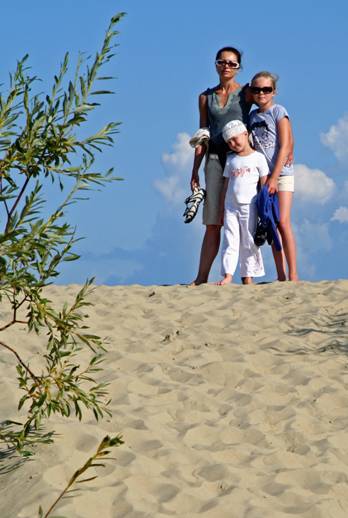
On top of the Nida sand dunes.
Visit Lithuania's coast if you want an “authentic” kind of vacation this year
Lithuania offers the Baltic Sea’s longest, whitest and softest beaches. Most of the country's coastline, from Kaliningrad until Latvia, consist of sandy beaches as far as the eye can see. Furthest to the south you will find Europe’s highest sand dunes, next to the picturesque old fishing village of Nida. In the midst of the coastline the bustling port city of Klaipeda is located, and a bit further north you are very much welcomed to the tourist towns of Palanga and Šventoji.
What makes the Lithuanian coastal line so special, is that here you can still find the kind of genuine, authentic atmosphere and tourist resorts that you may remember from your childhood also in other parts of Europe.
Beautiful nature, good beer, and fantastic smoked fish are just three of the ingredients that will make you remember “the good old times” as soon as you arrive….
Palanga is the most important resort of Lithuania. Some of you may have childhood memories from this unique and beautiful tourist village right on the Baltic Sea lazy waves and miles of attractive beaches ...
Palanga lives - throughout the night - during three hectic summer months. And if you're lucky, it may well be that you will experience a live concert with Stasys Povilaitis, Lithuania’s famous ballad singer…
- Bookmark :
- Digg
- del.icio.us
- Stumbleupon
- Redit it
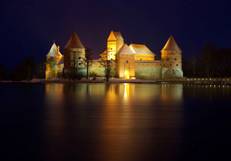
Lithuania's tourism business has exceeded projections in the first quarter pf 2011 and even beat records in some sectors, the Lithuanian State Department of Tourism (VTD) said. Over the Q1 of 2011, the number of tourists in Lithuania grew by 39.4% year-on-year.
Over January-March last year, 107,000 tourists stayed in Lithuanian commercial accommodation establishments, while this year the number went up to 150,000. The tourist traffic is reported to have increased from the tourism markets of great importance to Lithuania, writes LETA/ELTA.
Over the Q1, the largest increases were recorded in the numbers of tourists coming from Russia (61%), Belarus (53%), Poland (28%), Germany (31%), Estonia (34%), Great Britain (21%), Norway (57%), the Netherlands (34%), Belgium (31%) and the U.S. (68%). The growth in tourist numbers from Finland by 85% and from Spain by 71% made a pleasant surprise, VTD Head Dr Raimonda Balniene said.
Kaunas earlier received an award from the popular Spanish travel magazine QTravel as the most attractive destination in 2010. In the Q1, the largest number of tourists came from Ukraine. The growth in the tourist traffic from the country reached as much as 104%.
The 7.6-% growth in the local tourism is also good news to the tourism sector as it hardly stood at 1% in 2010.
Source:
http://www.baltic-course.com/eng/good_for_business/?doc=41734
- Bookmark :
- Digg
- del.icio.us
- Stumbleupon
- Redit it
Booming tourism in Kaunas this year!
- Posted by - (0) Comment
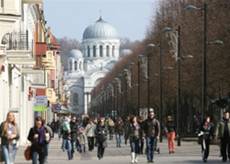
Kaunas, the second largest city in Lithuania, has brushed aside its reputation as a European backwater in recent months, with tourism in the city literally booming since the introduction of low-cost flights to the city last year.
With the boom in tourism, other areas of Kaunas’ economy have started to pick up too, including retail, construction and more, revitalizing this charming city and spurring renewed vigour into its development.
The growth in these sectors is attributed directly to the increasing number of foreign visitors, says the city’s mayor Rimantas Mikaitis. Since Irish-based low-cost carrier Ryanair started operating flights to Kaunas in 2010, the city has been resurrected from the point of collapse, he explains.
Read more:
http://www.argophilia.com/news/kaunas-booming-tourism/22847/
- Bookmark :
- Digg
- del.icio.us
- Stumbleupon
- Redit it
Direct flights to Palanga
- Posted by - (0) Comment

Palanga International Airport is a small regional airport located at the Baltic Sea, only 10 minutes away from the Palanga tourism resort and 30 minutes from the port city Klaipeda.
There are regular direct flights to/from Palanga Airport operated by the airlines airBaltic, Norwegian Air Shuttle, RusLine and SAS (Scandinavian Airlines).
Palanga has direct flights from Copenhagen (Denmark), Moscow (Russia), Oslo (Norway) and Riga (Latvia), from where it is easy to reach a lot of other cities in Europe and the world!
Check the airports web page for more information about flights etc:
http://www.palanga-airport.lt/en/
- Bookmark :
- Digg
- del.icio.us
- Stumbleupon
- Redit it
VilNews e-magazine is published in Vilnius, Lithuania. Editor-in-Chief: Mr. Aage Myhre. Inquires to the editors: editor@VilNews.com.
Code of Ethics: See Section 2 – about VilNews. VilNews is not responsible for content on external links/web pages.
HOW TO ADVERTISE IN VILNEWS.
All content is copyrighted © 2011. UAB ‘VilNews’.

 Click on the buttons to open and read each of VilNews' 18 sub-sections
Click on the buttons to open and read each of VilNews' 18 sub-sections 







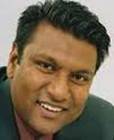





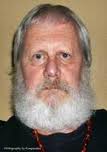

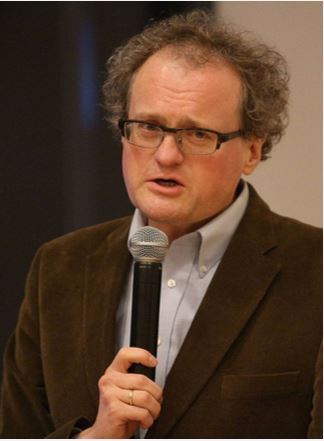
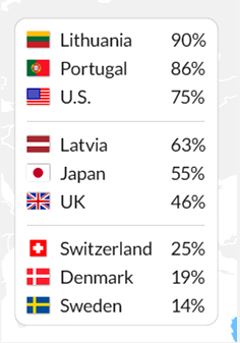
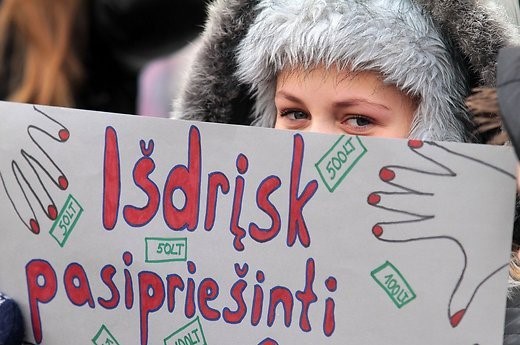


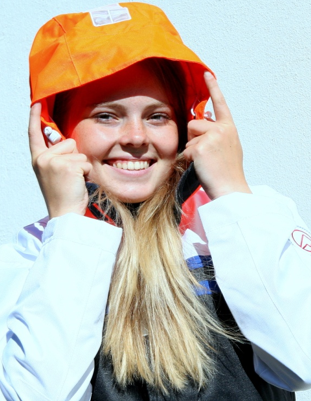
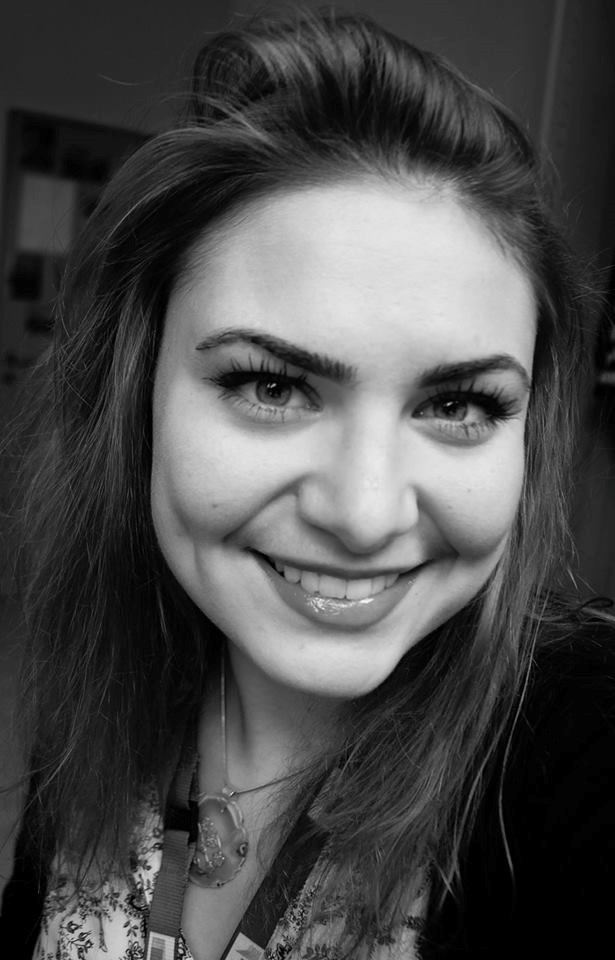
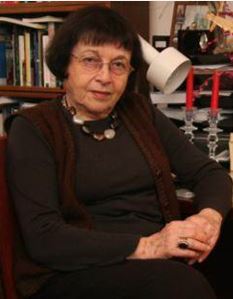
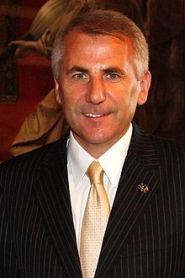
.jpg)
